Jong-Kae Fwu
MFPP: Morphological Fragmental Perturbation Pyramid for Black-Box Model Explanations
Jun 04, 2020
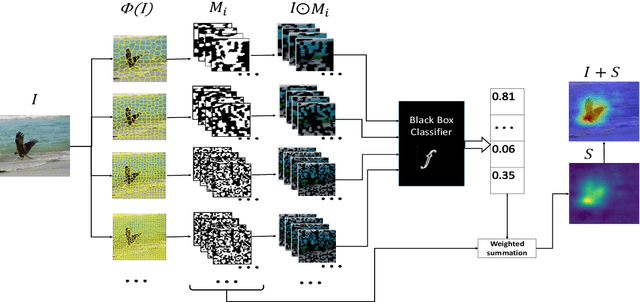
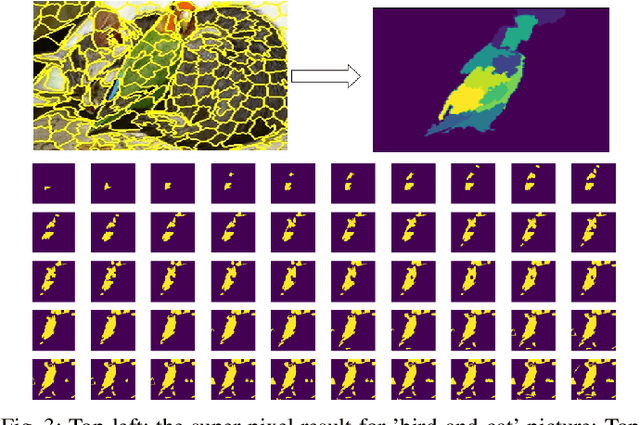
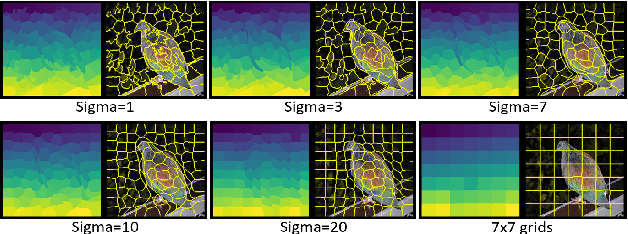
Abstract:With the increasing popularity of deep neural networks (DNNs), it has recently been applied to many advanced and diverse tasks, such as medical diagnosis, automatic pilot etc. Due to the lack of transparency of the deep models, it causes serious concern about widespread deployment of ML/DL technologies. In this work, we address the Explainable AI problem of black-box classifiers which take images as input and output probabilities of classes. We propose a novel technology, the Morphological Fragmental Perturbation Pyramid (MFPP), in which we segment input image into different scales of fragments and randomly mask them as perturbation to generate an importance map that indicates how salient each pixel is for prediction results of the black-box DNNs. Compared to existing input sampling perturbation methods, this pyramid structure fragmentation has proven to be more efficient and it can better explore the morphological information of input image to match its semantic information, while it does not require any values inside model. We qualitatively and quantitatively demonstrate that MFPP matches and exceeds the performance of state-of-the-art black-box explanation methods on multiple models and datasets.
PipeNet: Selective Modal Pipeline of Fusion Network for Multi-Modal Face Anti-Spoofing
Apr 24, 2020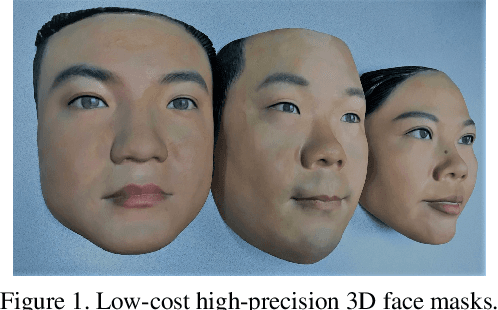

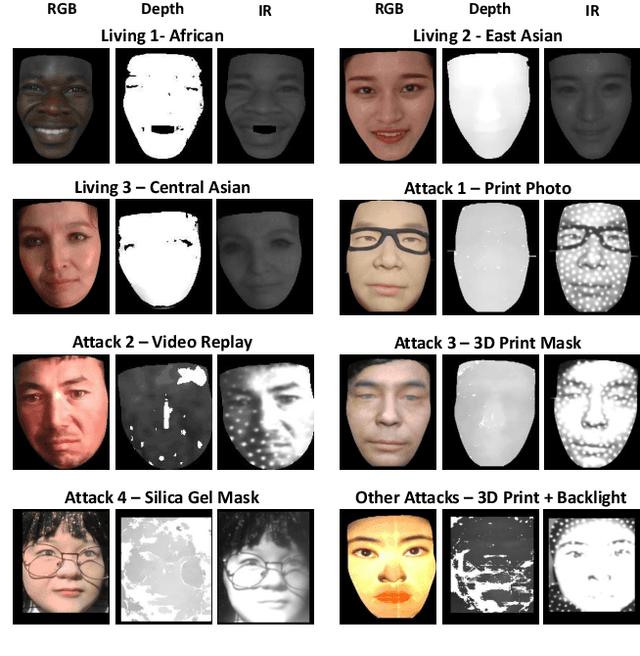

Abstract:Face anti-spoofing has become an increasingly important and critical security feature for authentication systems, due to rampant and easily launchable presentation attacks. Addressing the shortage of multi-modal face dataset, CASIA recently released the largest up-to-date CASIA-SURF Cross-ethnicity Face Anti-spoofing(CeFA) dataset, covering 3 ethnicities, 3 modalities, 1607 subjects, and 2D plus 3D attack types in four protocols, and focusing on the challenge of improving the generalization capability of face anti-spoofing in cross-ethnicity and multi-modal continuous data. In this paper, we propose a novel pipeline-based multi-stream CNN architecture called PipeNet for multi-modal face anti-spoofing. Unlike previous works, Selective Modal Pipeline (SMP) is designed to enable a customized pipeline for each data modality to take full advantage of multi-modal data. Limited Frame Vote (LFV) is designed to ensure stable and accurate prediction for video classification. The proposed method wins the third place in the final ranking of Chalearn Multi-modal Cross-ethnicity Face Anti-spoofing Recognition Challenge@CVPR2020. Our final submission achieves the Average Classification Error Rate (ACER) of 2.21 with Standard Deviation of 1.26 on the test set.
Channel Pruning via Optimal Thresholding
Mar 12, 2020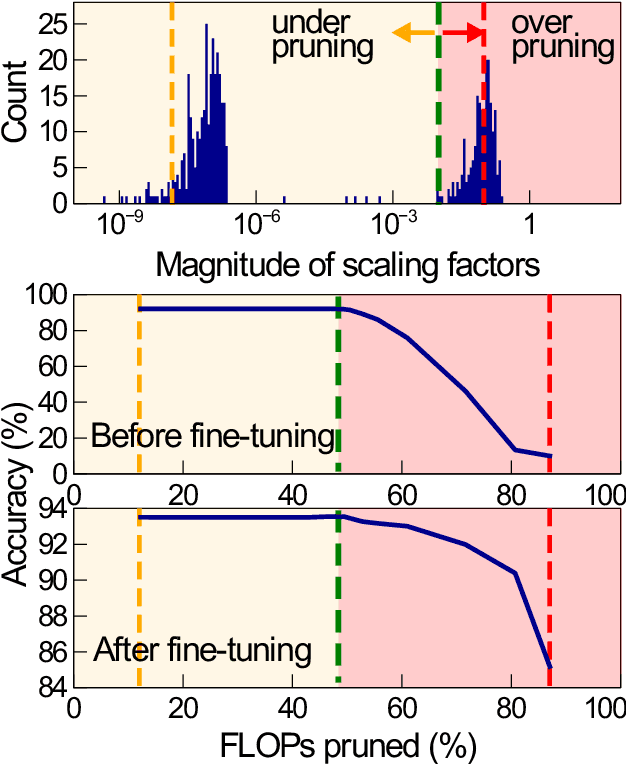
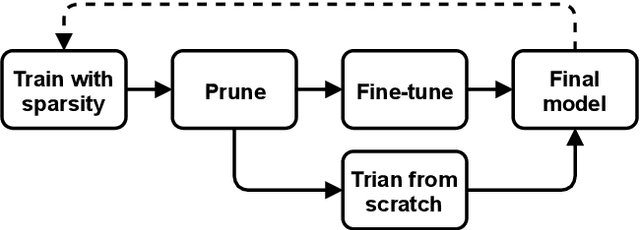
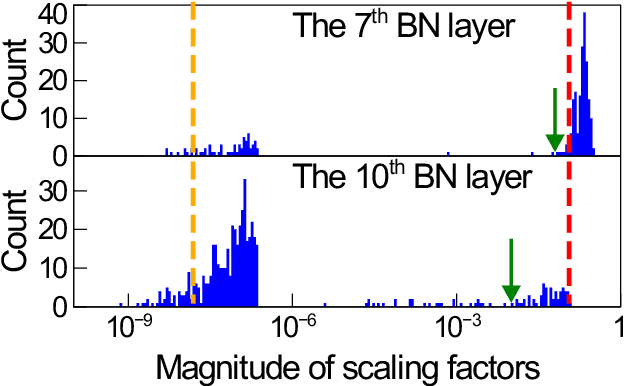
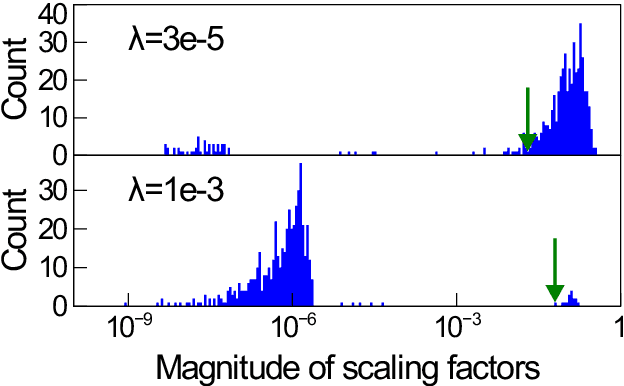
Abstract:Structured pruning, especially channel pruning is widely used for the reduced computational cost and the compatibility with off-the-shelf hardware devices. Among existing works, weights are typically removed using a predefined global threshold, or a threshold computed from a predefined metric. The predefined global threshold based designs ignore the variation among different layers and weights distribution, therefore, they may often result in sub-optimal performance caused by over-pruning or under-pruning. In this paper, we present a simple yet effective method, termed Optimal Thresholding (OT), to prune channels with layer dependent thresholds that optimally separate important from negligible channels. By using OT, most negligible or unimportant channels are pruned to achieve high sparsity while minimizing performance degradation. Since most important weights are preserved, the pruned model can be further fine-tuned and quickly converge with very few iterations. Our method demonstrates superior performance, especially when compared to the state-of-the-art designs at high levels of sparsity. On CIFAR-100, a pruned and fine-tuned DenseNet-121 by using OT achieves 75.99% accuracy with only 1.46e8 FLOPs and 0.71M parameters. code is available at: https://github.com/yeyun11/netslim.
 Add to Chrome
Add to Chrome Add to Firefox
Add to Firefox Add to Edge
Add to Edge